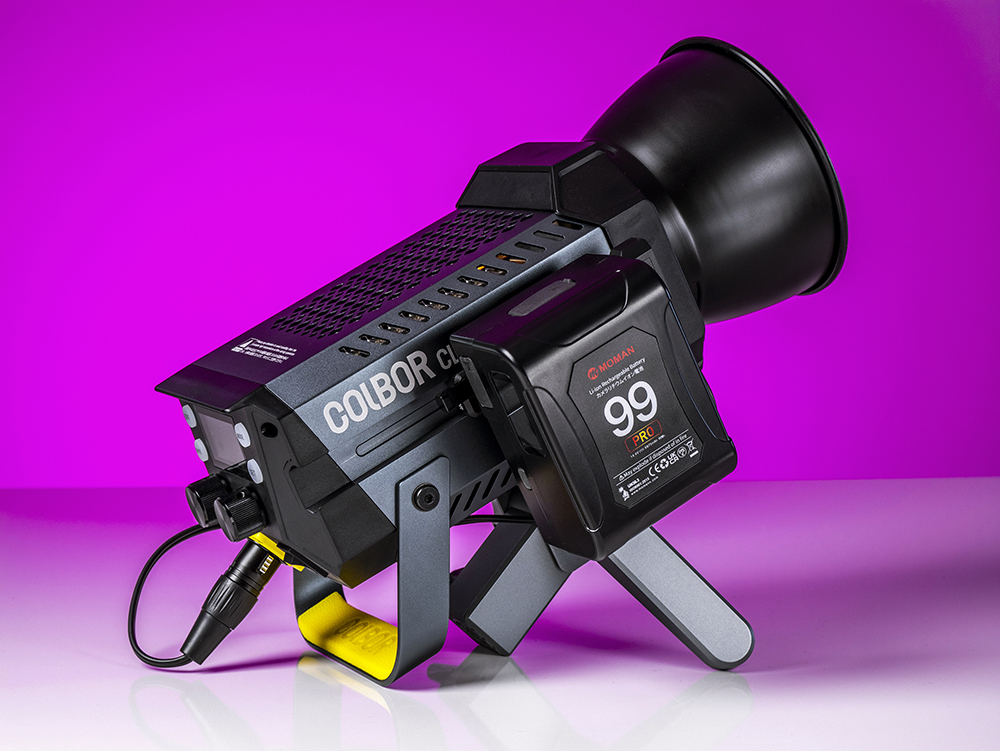
Colbor is a pretty small business that has a slender range of LED pocket light panels and a mixture of single, bi-, and RGB- colour COB (Chip-On-Board) heads. The newest of its COB heads is the Colbor CL220R. The regular COB heads the company produces don’t really stand out from the crowd of other Chinese-produced low-cost lighting, but the CL220R does for a couple of reasons – that it is a RGB head for the price of a bi-colour head, and that it offers battery operation for the price of an AC-only type of unit. It costs $399, is pretty small and seems to offer new film makers the chance to work with coloured light in a more controllable way than a tube light, without a significant outlay. Low cost kit is great of course, so long as it does what it is supposed to do and it doesn’t restrict how we can use it too much.
Features
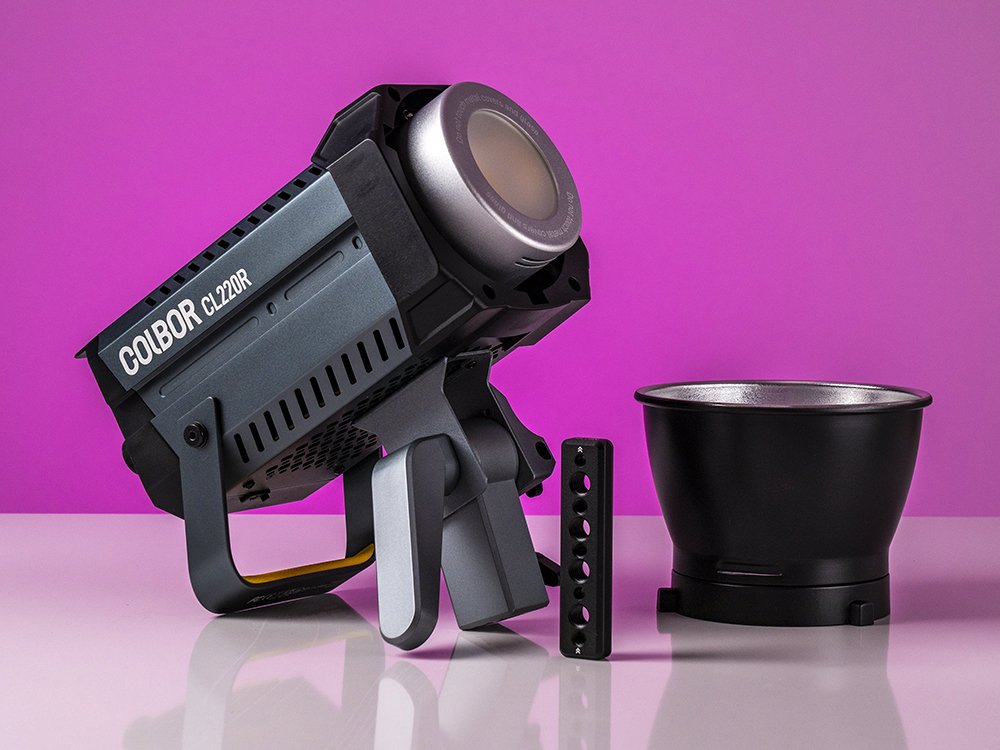
As the name suggests, the Colbor CL220R is a 220W head. Colbor tells us it should deliver 30,600lux at 1m when set to a 5600K colour temperature and the included reflector is in use. Without the reflector Colbor says we should expect 7100lux, so I’m not sure how they are doing the measurements. However they are measuring, they are only using the 5600K setting which uses the brighter LEDs that indeed relate to the 220W indicated in the name. When we switch to the RGB LEDs in the HSI mode the power drops to 100W, so expect the output to more than halve.
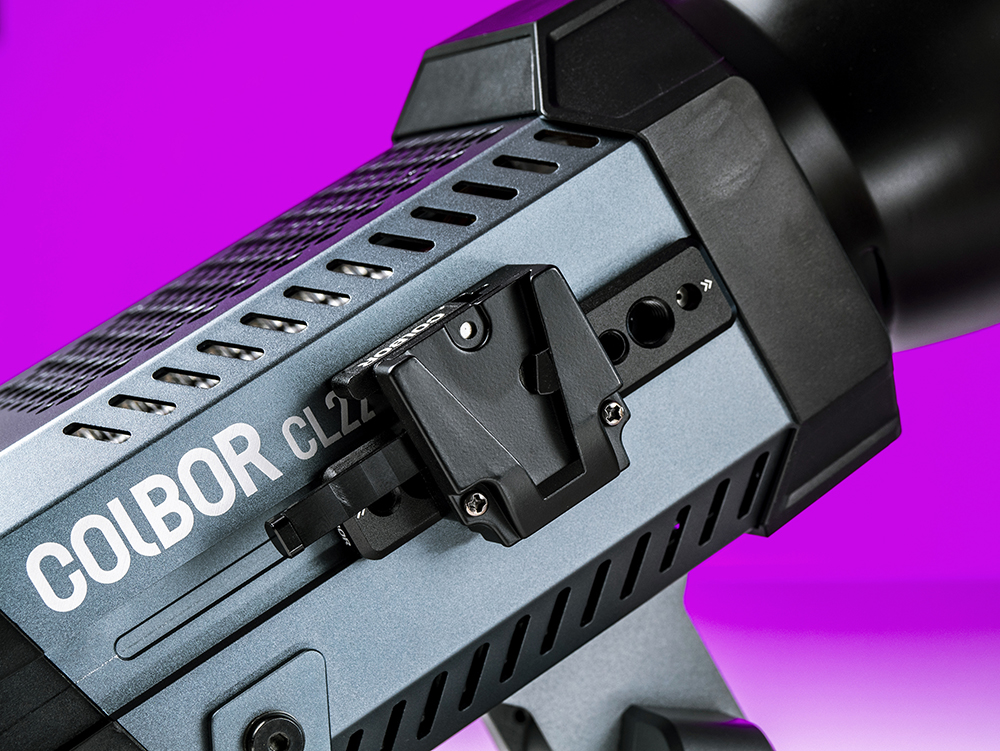
A notable feature of the head is that it can be powered by battery as well as via the AC adapter. That’s not much of a revolutionary feature these days of course, but it is in a head of this price – we usually pay quite a premium for this. What is quite cool about the feature too is that Colbor has built a slot track for a Nato rail on each side of the head, so we can slide in the supplied rail and attach a V-Mount adapter so the battery can hang off the body itself. Colbor’s own VM-3 adapter comes with a D-Tap to XLR cable, so we can plug the battery into the mains socket of the head. This keeps the arrangement neat and compact, and avoids any additional trailing cables. The Nato rail can be used to attach other accessories too, such as handles, bollies and to create a bank of lights by connecting two or more together on a single stand.
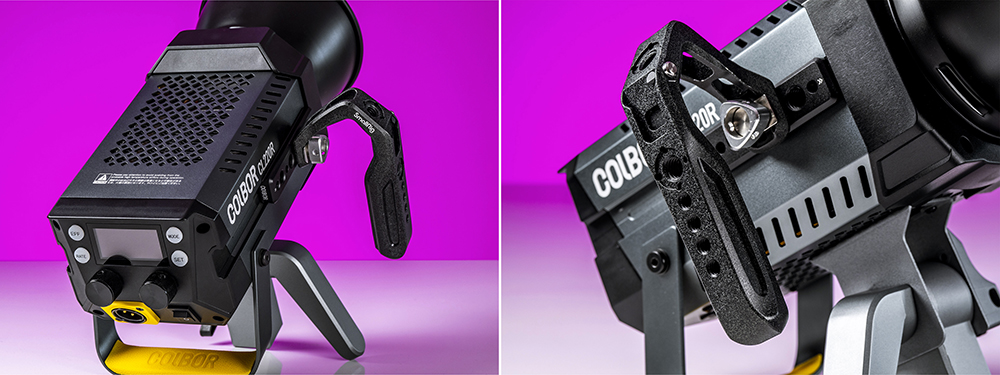
On the front of the head we have a standard Bowens mount, so we’ll never be short of modifiers, and the body is peppered with holes to help the fan keep temperatures under control.
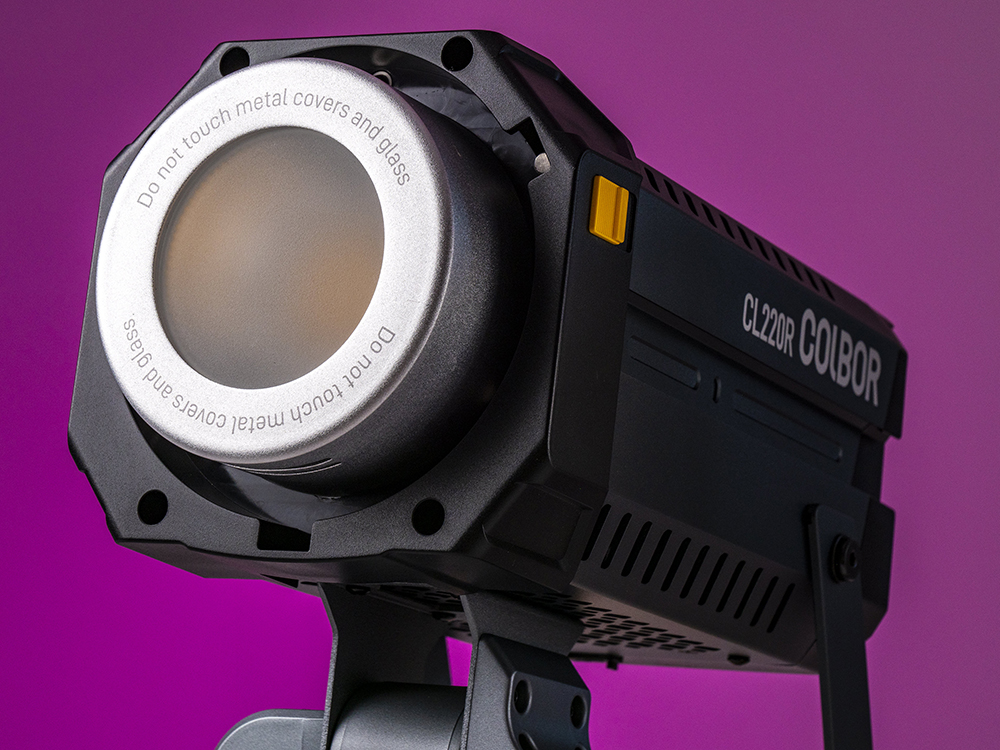
There’s a solid handle on the rear to make moving and carrying the head easy, and a hinged joint that allows the head to be angled up and down. At 1.6kg the head is pretty lightweight, and measuring 240x128x219cm it is quite small too. The body is covered with anodized aluminium, but the knobs and the handle for adjusting and locking positions are made from plastic.
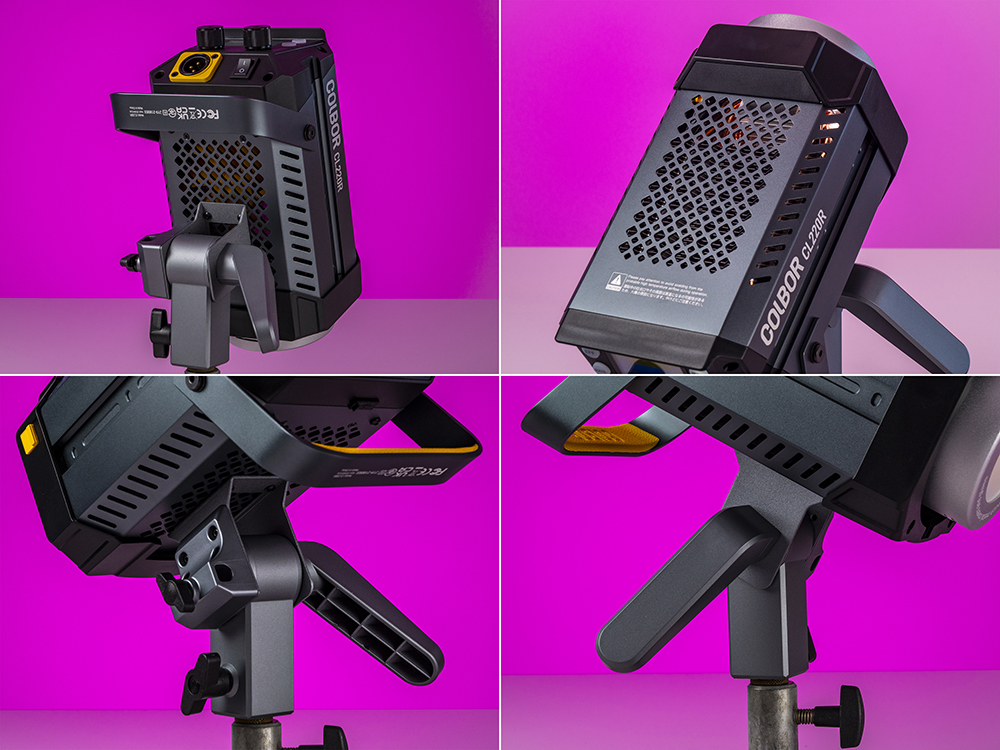
Modes
There are three operating modes offered by the Colbor CL220R. The primary is the CCT mode that allows us to set temperatures between 2700 and 6500K, with a magenta/green wiggle of 10 units. In this mode we can adjust the temperature in units of 100K and the output from 1% to 100% in 1% steps.
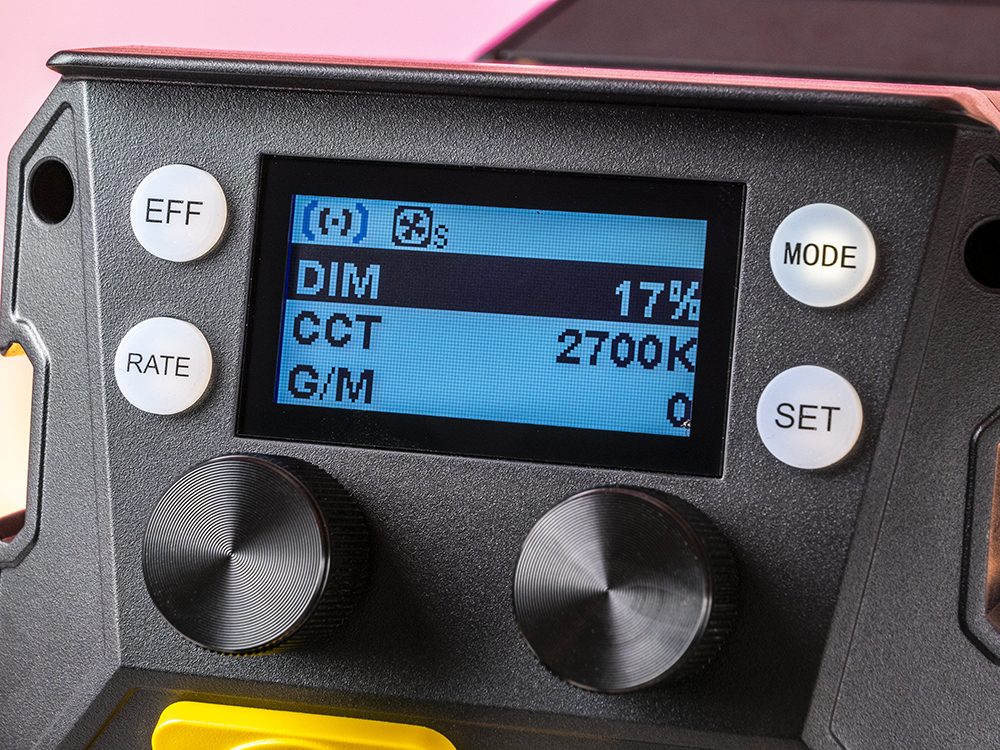
In HSI mode we can alter Hue in 1° steps, and Saturation and Intensity in single percentage steps, while Effects allows us access to a library of 13 special effects that generally involve flashing lights. We can regulate the frequency of the flashes/pulses and we have three types of emergency lights to choose from with different mixes of red, blue and white to match those of the emergency services of the location we are portraying.
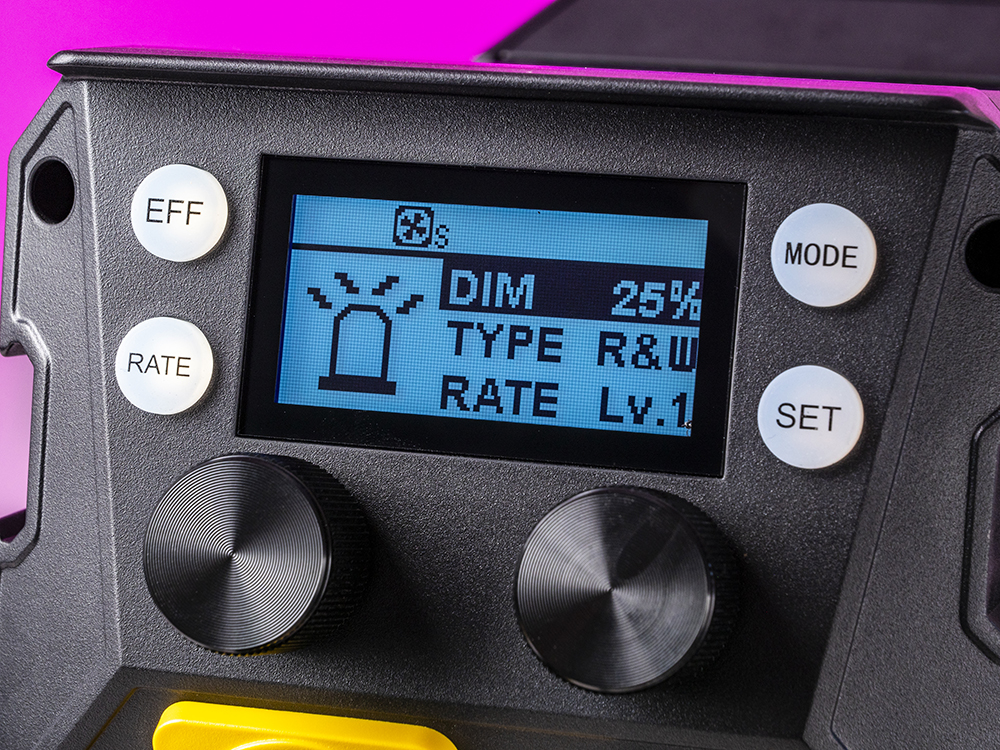
We also have remote control of all these settings via a 2.4GHz connection to Colbor’s Colbor Studio App. The app lets us adjust all the same settings that the panel on the unit does, but also gives us a colour wheel to choose RGB settings. On some phones we can use a colour picker via the camera or to select colours from images in the phone’s gallery. The app is available in the Apple store but those with Android devices need to download from the Colbor website – which generally isn’t recommended. I loaded it onto an iPhone and to a wiped Android phone for this review.
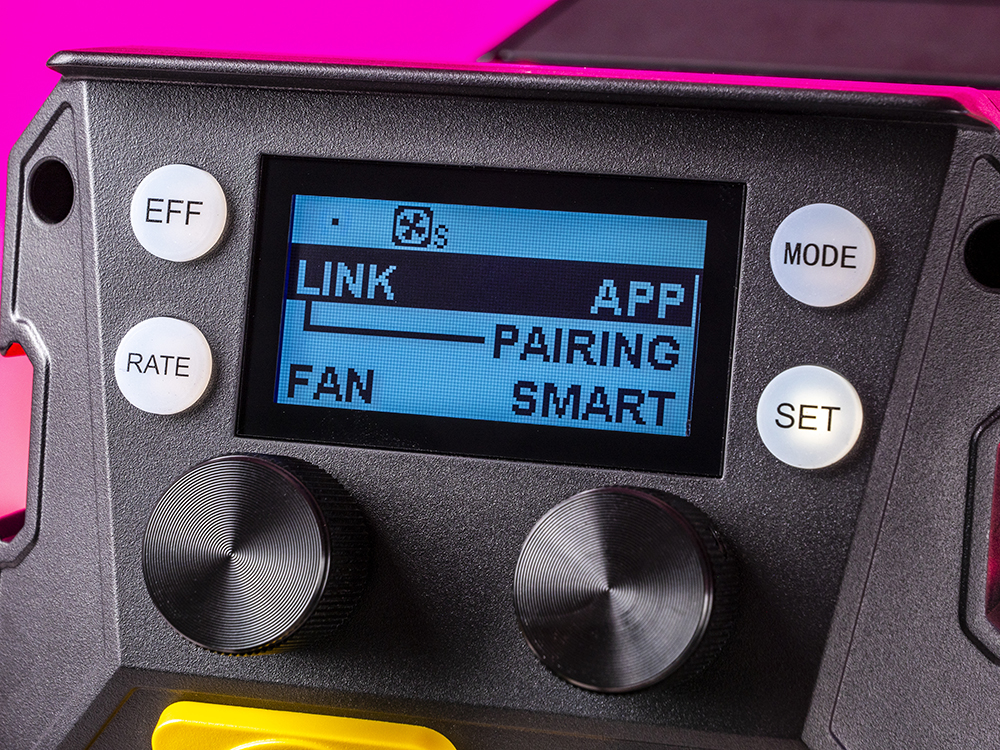
In Use
I’m not a big fan of complicated operating systems that I forget how to navigate between outings for the product, so I was very pleased to be able to find my way around this light immediately and without recourse to handbook. It is very simple to use, and everything on the rear control panel is plain and self-explanatory. The buttons feel nice, they respond quickly and the dials are well made and operate as you’d expect. A slow turn moves units of change along slowly, while a quick spin can get you from 2% to 50% in no time at all.
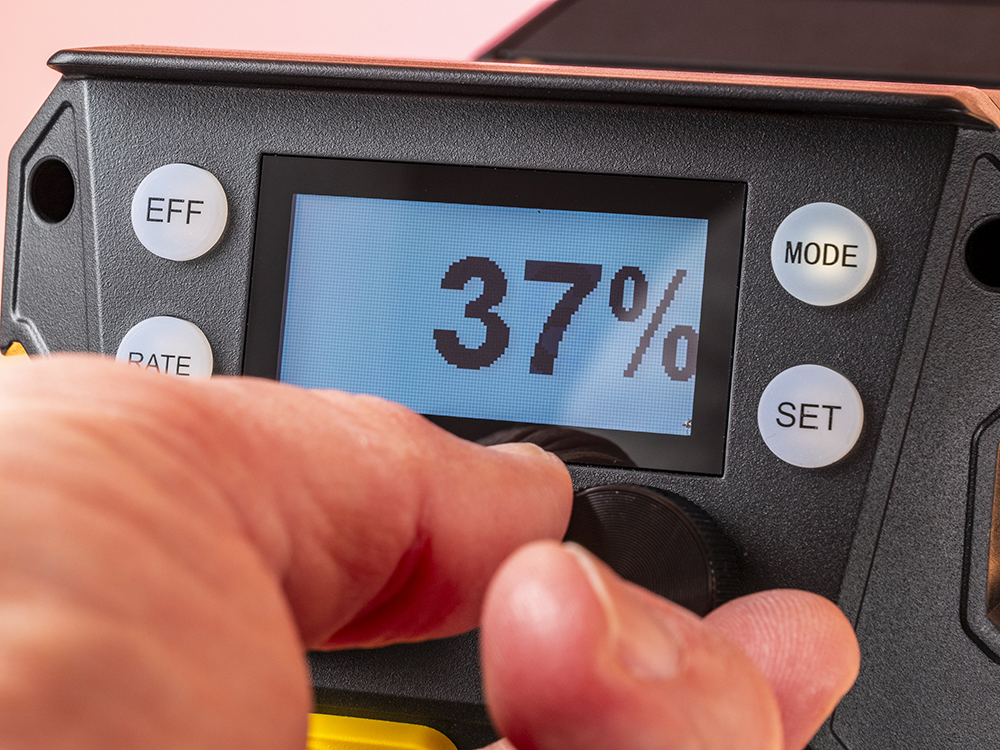
A very nice touch is that when you are adjusting any of the values on the rear screen the numbers go super-sized so you don’t need to squint or find your other glasses.
A slight disappointment is that when under battery power we can’t turn the brightness above 50% unless the V-Mount battery is a 26V model that will cost more than the light itself. As most users are likely to hang a 14.4V battery on the side of the head – for size, weight and cost practicalities – this somewhat restricts what we can do with the head, but it doesn’t degrade the value of having battery operation entirely. What is a bit more of an issue is that we seem to lose RGB lighting completely when the battery drops below a certain power. With the Moman Power Pro 99, which has a capacity of 99Whs, this seemed to be around the 50% mark.
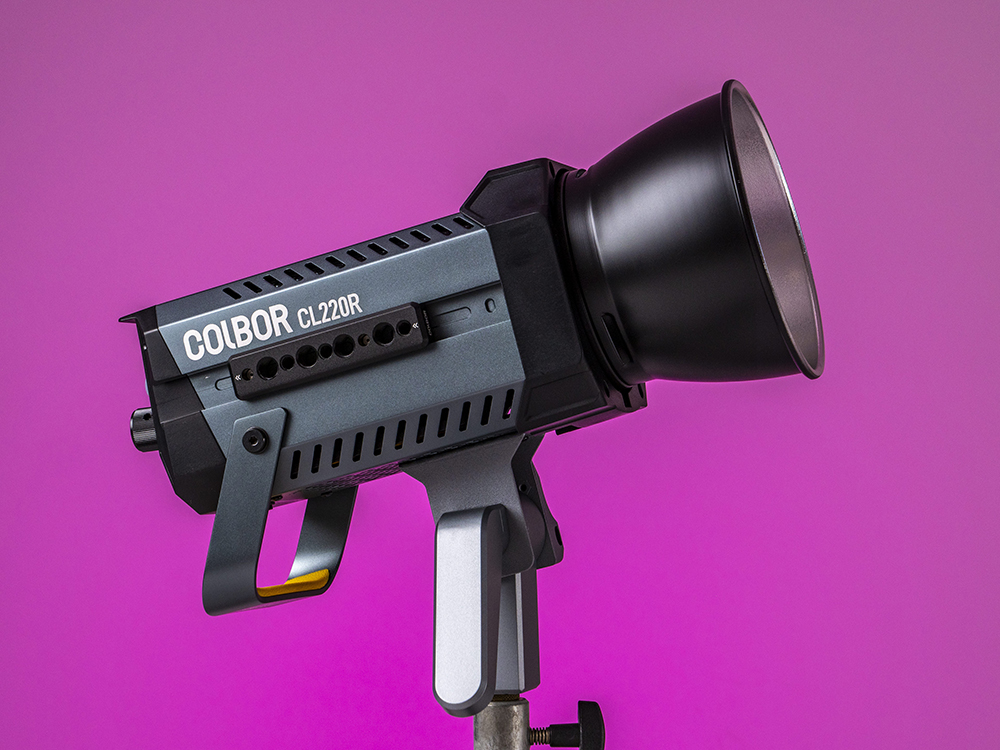
Another minor concern with the battery situation is that the Nato rail isn’t held firmly in place in the slot on the light, so the battery can wobble around a bit. It won’t come out, as the rail is held in place and won’t slide, but it wobbles up and down a bit. It probably doesn’t matter, but it didn’t make me feel confident that I’d hang a heavier battery for long – or indeed another light.
No one will buy this light to combat the full sun of lunchtime on a summer’s day as it simply isn’t bright enough, but I found when powered via AC it could fill nicely in daylight, and in the studio it is powerful enough to operate as a principle light source. We are blessed with fantastic noise performance in modern cameras, and obviously the higher you are comfortable to push your ISO the more use you’ll get from this light.

As mentioned earlier, Colbor quotes 30,600lux at 1m with the supplied reflector. I couldn’t read that in my tests, and found my Sekonic L-558 meter said the light reaching it was only worth 5536lux – with or without the reflector. At ISO 100 I measured 11.1EV, which translates to f/5.6 at 1/60sec. These readings were taken with the temperature set to 5600K, but with the RGB LEDs in action that reading drops to f/2.8 4/10th for pretty much all the combinations of colours. Obviously at ISO 400 that’ll be back up to f/5.6 3/10th with the colours on. How you’ll view that will depend on how much depth of field you need – and how close you are happy to have your lights.
Colbor claims this head has a CRI/TLCI rating of 97+, and I’m not really able to measure this with any scientific accuracy. What my basic tests showed though is that shadows contain more blue and highlights more yellow, and that greens appear a little under-saturated. White balance read from a grey card appears about right, and it remains mostly constant across the brightness range of the light.

The fan does kick in quite quickly, but it isn’t too loud. Colbor calls the system Hummingbird-Intelligence Cooling System and says it runs at less than 30dB. I noted it comes on and runs softly when the light is switched on and picks up as it needs to if the head begins to get hot. We can switch the fan control from Smart mode to Quiet or Performance should the occasion arise. If you were close with a mic you’d hear it, but normal distances will render it inaudible in most situations. The body is covered in holes, so plenty of air gets in and it doesn’t usually have to work too hard.
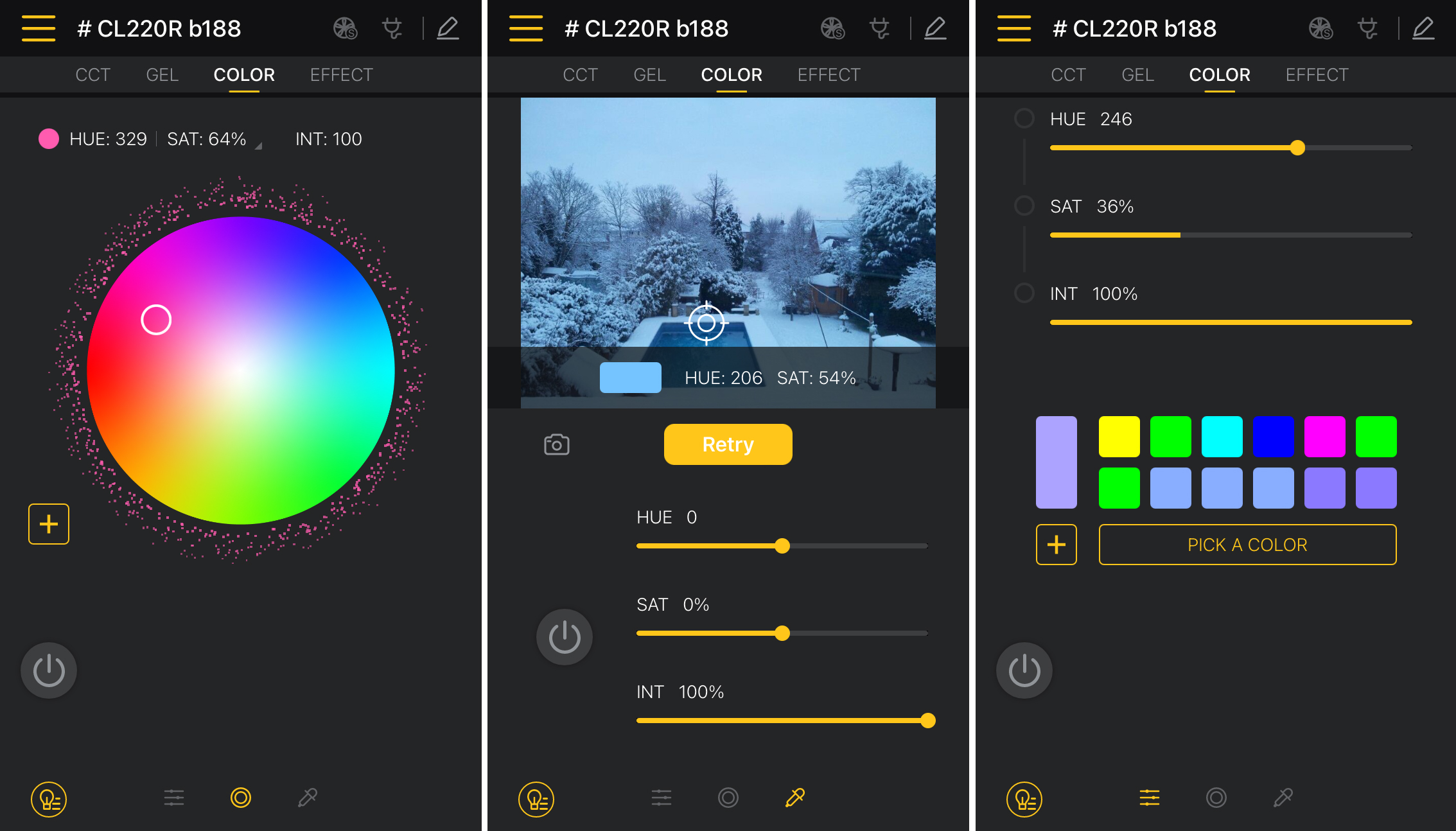
The app operates well and presents a much more convenient means of controlling the light – so long as your phone’s sleep settings don’t mean you have to key in a password every time you want to shift the colour. The app is well laid out, but looks a bit smarter on iPhone than it does in its Android version, but both are simple to use and give us a bit more visual control than the light’s own panel. We can also control multiple lights, and group of lights without having to move to attend each one, which is very convenient. Connection seems to take place very quickly, so there’s no waiting around while the app tries to find the light.
Accessories
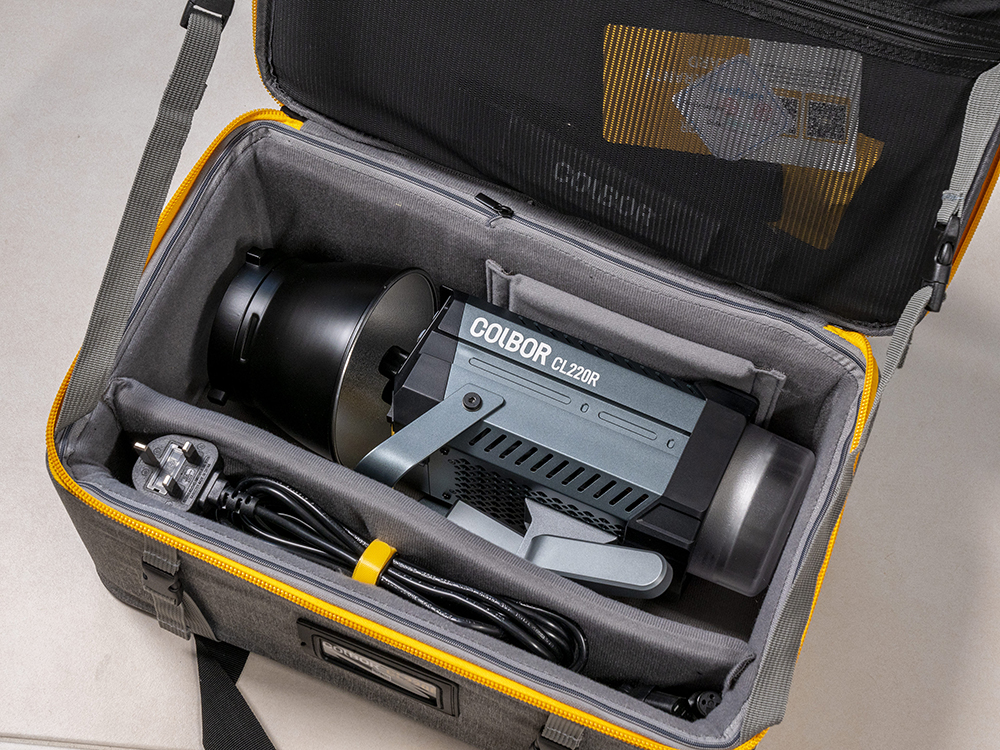
The head comes in a nice semi-rigid case with a decent amount of padding to protect the unit while you load it into your car or stacking it in storage – but it’s no flight case. There’s room for the supplied AC adapter and its long cable, the 45° reflector, the case strap and a few other additional accessories. The Nato rail is also included in the kit, but the VM-3 mount for V-Lock batteries is extra ($36).
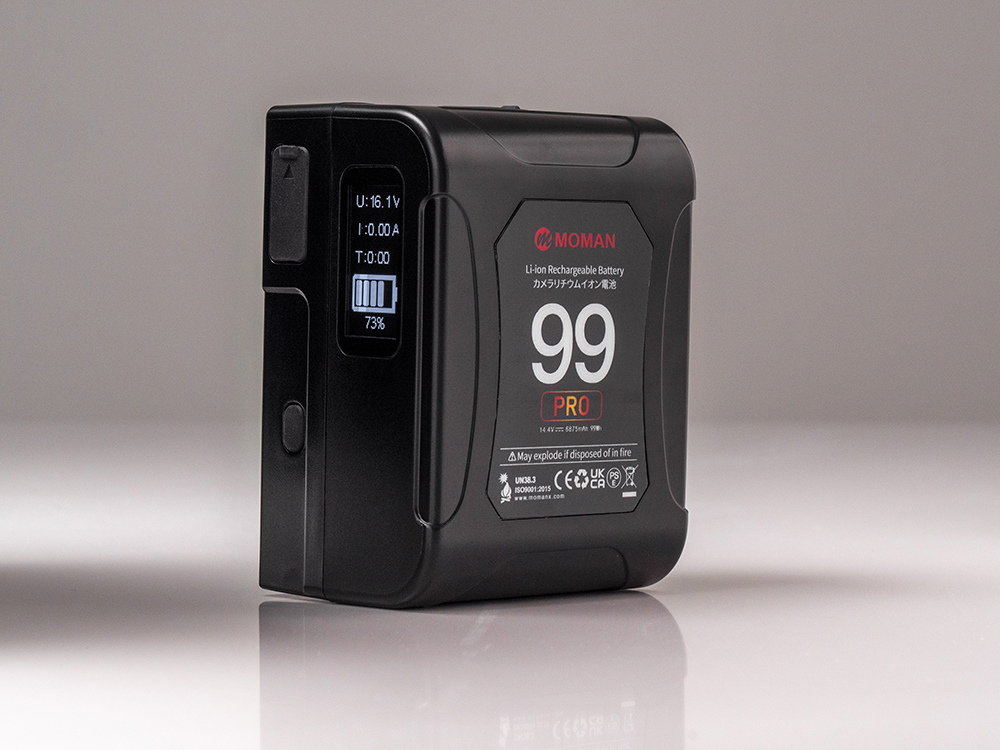
I used this with a Moman Power 99 Pro mini-V-Mount battery ($180 – https://momanx.com/) that has a capacity of 99Wh. This is one of the new generations of batteries that feature an LED information panel that tells us how much charge is left, how much is being drawn and how much longer we can expect it to power the device if the draw continues at the same rate. When connected to the CL220R I could see how many minutes I had left depending on the brightness level I was using the light at. That’s obviously really very useful indeed, especially in this case where you have to keep an eye on the power if you want to use the HSI mode. The battery has D-Tap ports either side, as well as USB-A and USB-C ports for charging it and for charging/powering other products – such as your phone. It obviously also has the regular 5-pin connection on the bottom too.
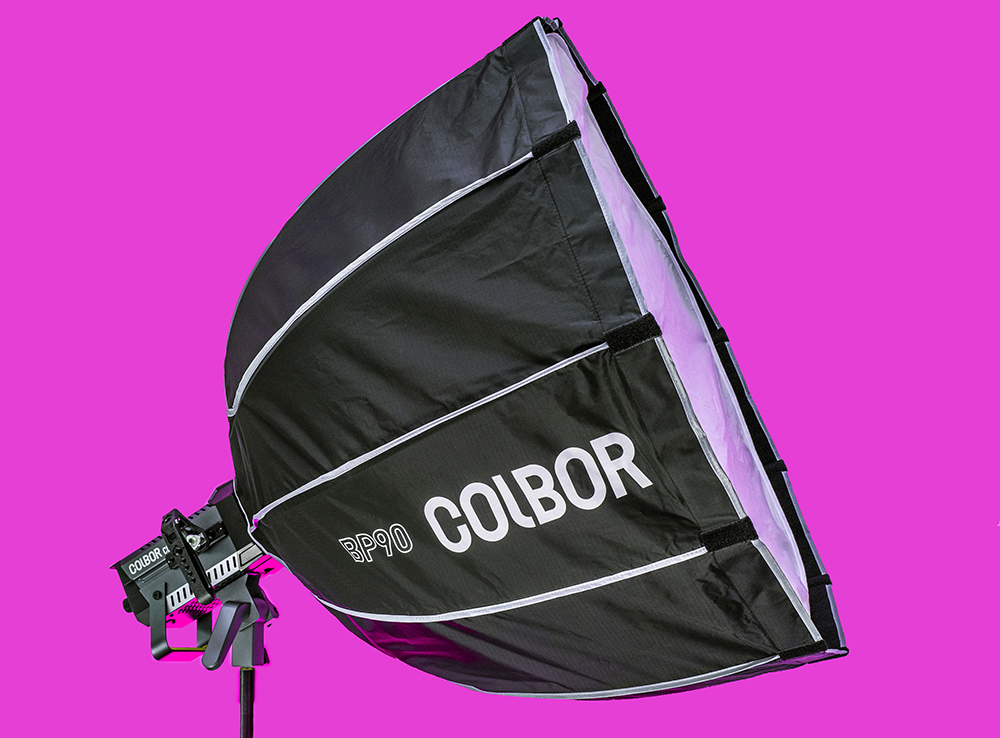
I also used Colbor’s BP90 Parabolic Softbox ($120) for this review. It’s an umbrella-style unit that quickly opens out to become a softbox with a circular front face. It comes with a thin diffuser, and has opening Velcro-style panels near the mount so we can get our hands in to attach it to the light more easily. It is lightweight and a good match for this head, as while it makes the arrangement quite front-heavy it doesn’t pull the light down from the position you set it to. I was surprised how solidly the light’s own mounting bracket held up to the pressure.
Verdict
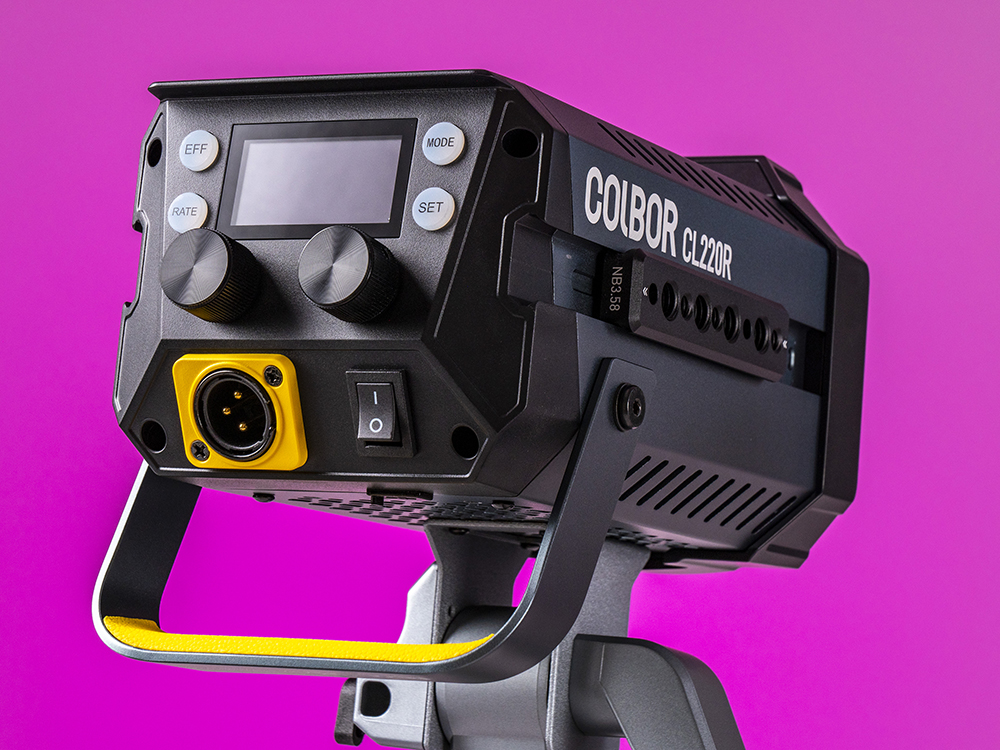
I think I’ve made it clear that this isn’t a powerful light, but it is a useful light that doesn’t cost a lot of money. I’m attracted to the battery operation and the RGB capability, though unfortunately these are the two elements that restrict the brightness of the light and thus limit its usefulness. On paper these handicaps seem much more serious than they did in action, and so long as you are well aware of what the light can do and what to expect users can plan to use it accordingly. If you are intending to use it running on the battery and want to take advantage of the RGB functions you’ll just need a 26V battery or to take more than twice as many 14.4V batteries as you’d expect.

On the battery or via AC, I found that actually the CL220R is fine as a main light for waist-up shots so long as you are using a reasonably wide iris and a moderate ISO setting, and that it works very nicely as an accent or fill light in a daylight setting or when a more powerful light is doing the important work. For new film makers the Colbor CL220R presents the opportunity to own a RGB head that will open new creative opportunities, as well as one that performs well enough in practical situations where a CCT mode is all that’s needed. At this price you can look at it as a bi-colour AC-powered head that competes well with the other similar heads on the market – but which also offers RGB colours and battery operation into the bargain. From that perspective, it’s excellent value for money, and a lot of fun to use.


Filmtools
Filmmakers go-to destination for pre-production, production & post production equipment!
Shop Now












